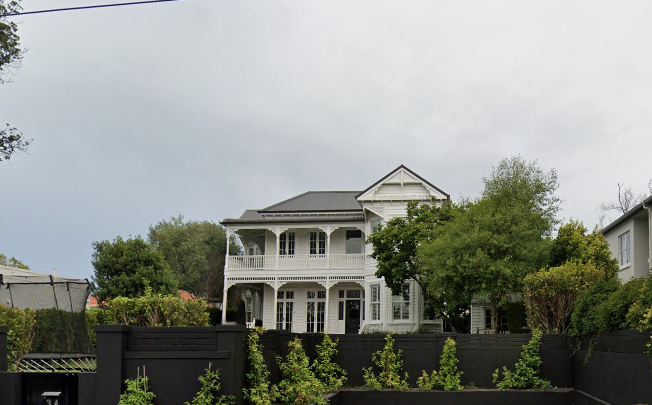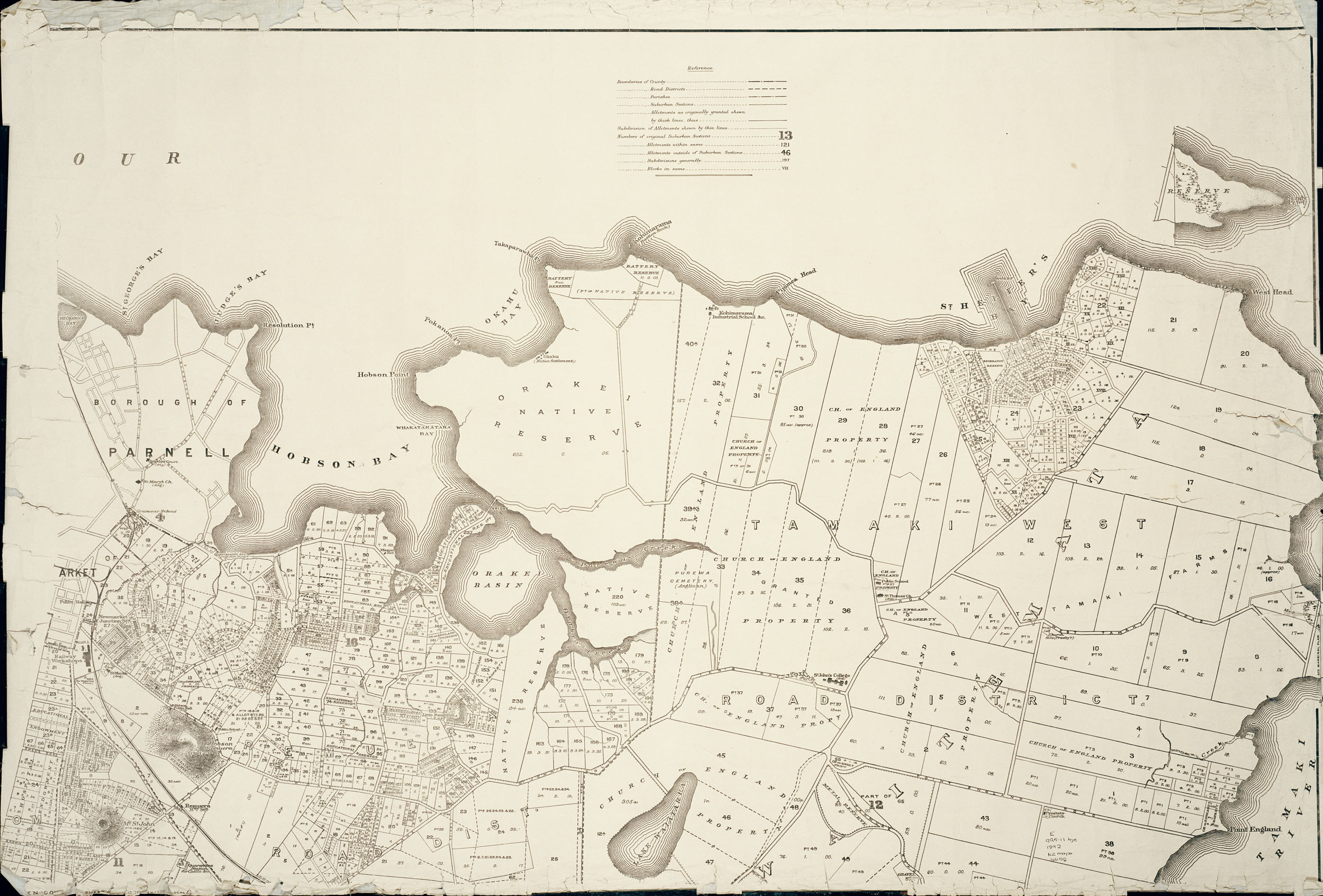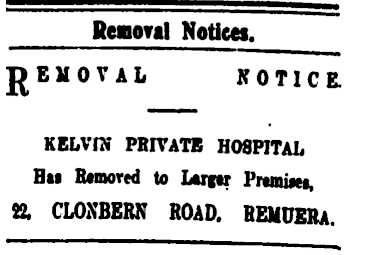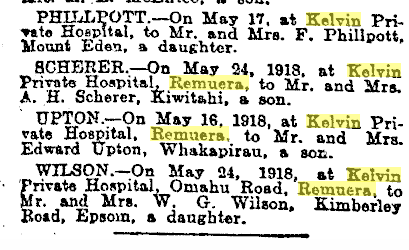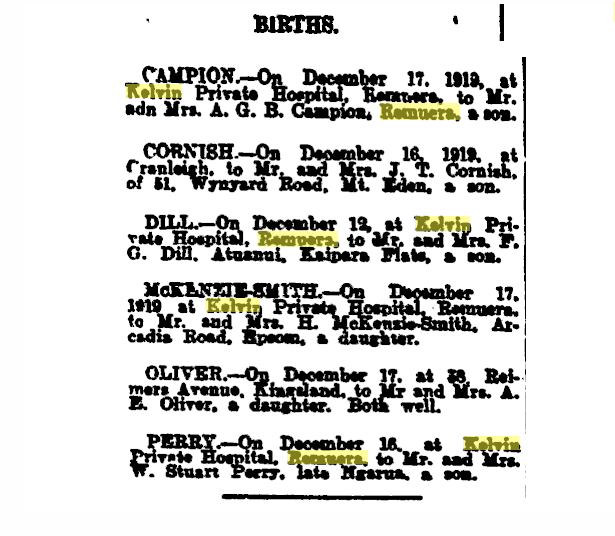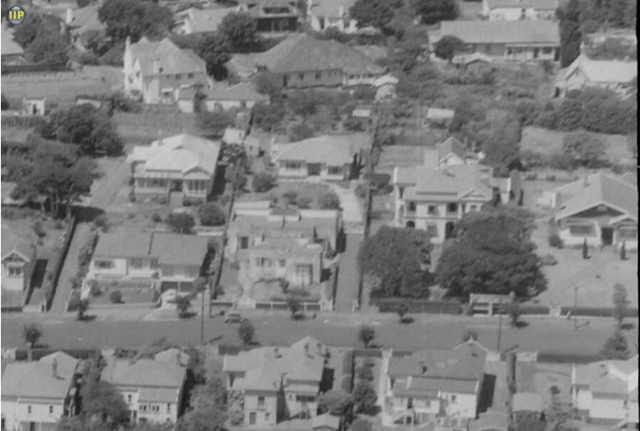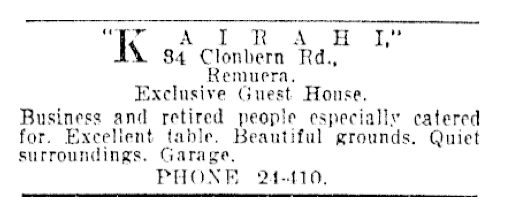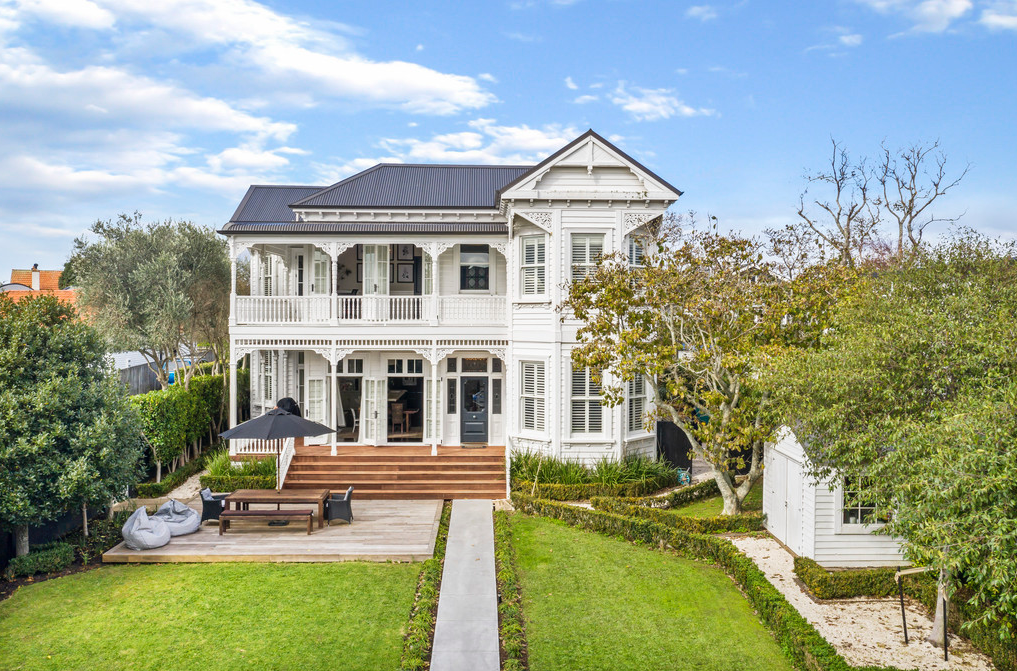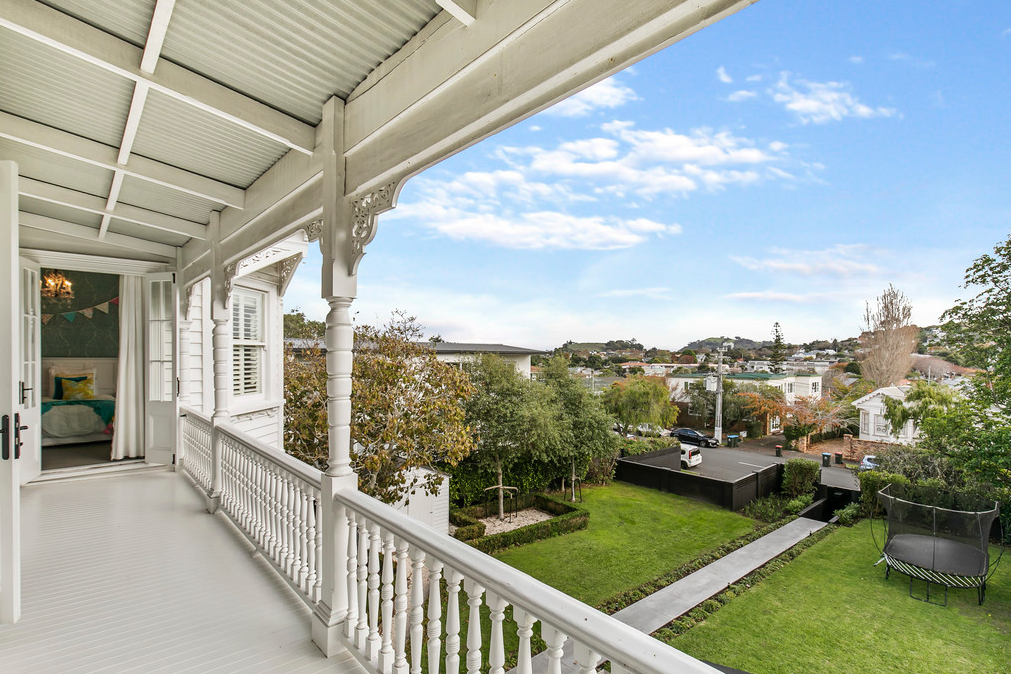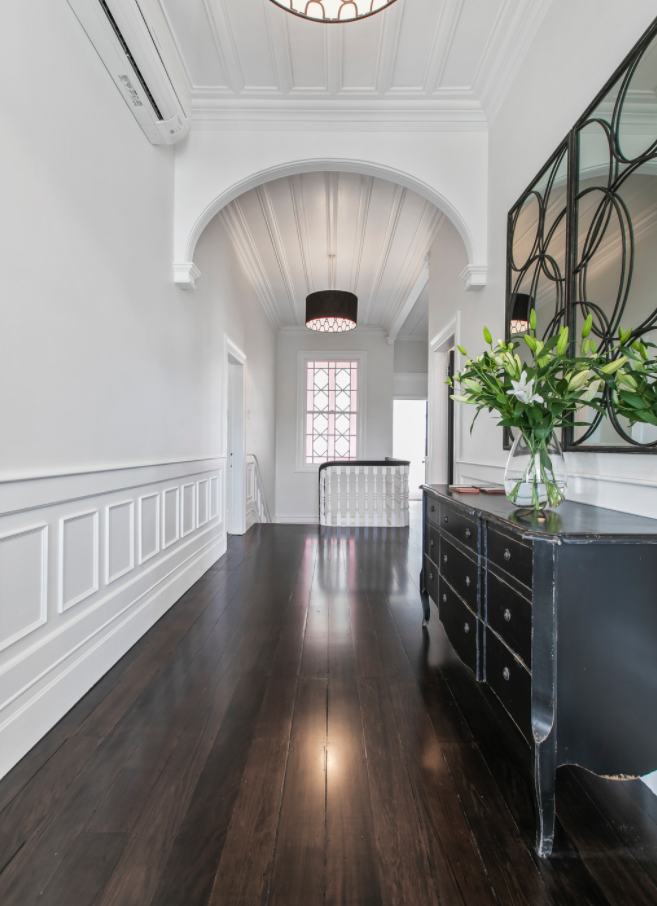Kelvin Private Hospital, later Kairahi Guest House, 34 (22) Clonbern Road, Remuera

Looking down Clonbern Road from L J Keys, grocer, corner Remuera and Clonbern Roads, early 1900s (Auckland Museum, Vaughn Collett Cooper collection, PH-NEG-B3024)

State Babies, St. Helens Maternity Home, Auckland, July 1909 (Auckland Libraries Heritage Collections AWNS-19090729-4-5)
Clonbern Road was formed in the early twentieth century, early maps show that it did not exist in 1892. Although there appear to be established dwellings in Clonbern Road by the early 1900s, the ‘Clonbern Estate’ was opened up and marketed from late 1905 as being “elevated allotments”, “in the best part of Remuera”, and “within 3 minutes of electric tram service and railway”. [1, 2]
The origin of the naming the street Clonbern is not known, however Clonbern is a parish in County Galway [3], and was the property of the Archbishop of Tuam. [4]
Up to WW2, 34 Clonbern Road was no. 22 Clonbern Road.
An early owner of the large two-storey residence at 22 Clonbern Road was baker Thomas King who lived there with his family of nine sons and six daughters from 1906-1909. [5] His father, John King (1827-1906), died at the property on 17 October 1906. [6] King and his family remained at the address until the completion of their new bakery premises on the corner of Remuera and Armadale roads in 1910. [7]
Thomas King (c.1855-1927), was born and educated in Somerset, England, and immigrated with his flour miller parents to New Zealand in 1865. [8] Taking to the baking trade, he spent five years working for Mr David Grubb who ran a business on Karangahape Road, Auckland prior to moving temporarily to Australia for employment with leading Melbourne bakers. [9] On his return to Auckland in 1877, he worked for a time for a Mr Hall at Otahuhu before acquiring the Queen Street business of Easdown and Co. in 1884. [10] By 1886, King had established ‘The Royal Bakery’ on Ponsonby Road and was soon regarded as a “leading caterer in Auckland”. [11] By 1906, King, his wife Emma (nee Jackman) and their large family had set up home in Remuera. [11] He ran Royal Bakery on the corner of 81 Remuera Road and Armadale Road until about 1915.
In 1909 the property was bought by former asylum attendant and newly registered nurse Miss Josephine A Gibbons (1869-1948). [12] Josephine Gibbons was trained at St Helens Hospital, Auckland and became a registered nurse in June 1909.
22 Clonbern Road became the private maternity hospital Kelvin Private Hospital, from 1918-1924, under the aegis of Miss Gibbons. [13] The private hospital had existed in different locations in Remuera before moving to the larger Clonbern Road site in 1918 – Remuera Nursing Home (1913), Kelvin Nursing Home, Remuera Road (1915), Omahu Road (1915-1918) [14]
In the late 19th century most married women gave birth at home. At the beginning of the 20th century, the quality of midwivery was varied and there was concern about the effects of high infant mortality on the future of the nation. In 1903, 81 infants died for every 1000 born. Prompted by these numbers, Premier John Seddon published a ‘Memorandum on Child-Life Preservation’ with recommendations for improving the health of infants and children: registration of midwives, state-subsidised midwives for the poor and state-controlled maternity homes. In 1904 the government set up seven public maternity hospitals (St Helens hospitals) around the country, which provided subsidised maternity care and trained midwives. Both before the legislation was passed and after the hospitals were set up, private doctors complained that they were taking their patients [15, 16] and private maternity hospitals continued to flourish [17].
In this environment Kelvin Private Hospital did not continue without incident:
“A commission is to sit in February to inquire into the deaths from puerperal septicaemia last year at the Kelvin private hospital, 22 Clonbern Road, Remuera,” stated the Minister for Health, Sir Maui Pomare, in response to an inquiry last evening. Under authority given in the Health Act, said Sir Maui, a committee of the Board of Health would be set up with the powers of a commission. So far as publicity was concerned, the commission would act according to the rules governing an ordinary royal commission. Kelvin Hospital, which was closed for a period by order of the Medical Officer of Health, Dr. T. J. Hughes, had been reopened.” [18]
Several newspaper accounts succeeding, plus the Kelvin Commission report in the Appendix to the Journals of the House of Representatives (AJHR):
“The maternity home Kelvin, in Clonbern Road, Remuera, has again been closed by the Health Department owing to the discovery of a case diagnosed as puerperal septicaemia. The patient has been removed to the Auckland Hospital, and was reported last evening to be doing well. It is understood there were no other patients in the home at the time. Dr. J. Foyd, assistant medical officer of health at Auckland, states that the home was closed on Tuesday, and the department is taking all precautions. Cases of puerperal septicaemia at Kelvin Hospital last year resulted in the institution being closed until the end of January last. A Royal Commission, of which Mr F Earl, KC, was chairman held an exhaustive inquiry into the occurrences.” [19]
“Nurse Gibbons has voluntarily closed Kelvin Maternity Hospital and returned the register and license to Dr. T. J. Hughes, the Medical Officer of Health. Not only has the matron closed the hospital, but she has announced her intention to take “a much-needed rest,” and abandon practice as a maternity nurse.
“Writing to Dr. Hughes on July 3, Miss Gibbons said she would never again take obstetric cases, though she was abandoning the work with regret, for she had given the best years of her life to it, “to the exclusion of all private interests.” However, she felt that she would suffer a final breakdown of health should she again take the risk of striking a bad case.
“If ever I re-enter the nursing world, it will certainly not be in the midwifery branch,” added Miss Gibbons. “I am returning the register and license on Monday. I thank you and your staff for your unfailing fairness and kindness.”
“Dr Hughes stated to-day that Kelvin had now ceased to be a private maternity hospital.” [20]
22 Clonbern Rd then became “apartments” still run by Miss Gibbons [21, 22], but was most likely a private hospital for elderly residents, latterly a guest-house. From 1946 Miss Gibbons appears on the electoral roll at 32 Clonbern Road.
In 1940 34 Clonbern was “under new management” and was renamed ‘Kairahi’ [23, 24] and remained a guest-house up into the 1960s and 1970s. [26]
In recent years many Clonbern Road heritage homes have been removed for development. 34 Clonbern Road was last marketed for sale in 2012 and 2019 [27, 28], and retains many of its heritage features.
Jan Bierman
October 2020
